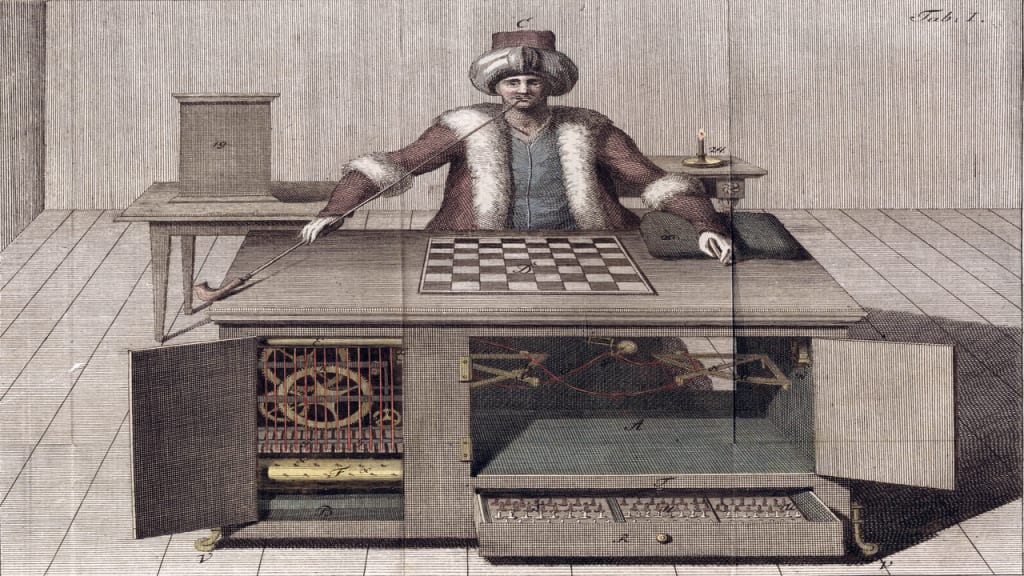The GENIUS of The Mechanical Turk EXPLAINED
Historical Mysteries

The Mechanical Turk, or "Automaton Chess Player," was a remarkable 18th-century invention that captivated audiences across Europe and the Americas. Constructed by Wolfgang von Kempelen in 1769, this ingenious device appeared to be a life-sized, mechanically operated chess player capable of competing against human opponents. Despite its eventual exposure as an elaborate hoax, the Mechanical Turk remains a fascinating study in human ingenuity, deception, and the interplay between technology and entertainment.
Origins and Design
Wolfgang von Kempelen, an accomplished Hungarian engineer and inventor, built the Mechanical Turk after being inspired by a magician's performance at the court of Empress Maria Theresa of Austria. The device itself was an intricately designed cabinet with a life-sized figure dressed in Ottoman robes seated behind it. The cabinet had doors that could be opened to reveal a complex arrangement of gears and cogs, ostensibly demonstrating the machine's inner workings.
The Turk's left hand held a long Ottoman pipe, while its right hand was poised over a chessboard. Spectators were led to believe that this automaton could think and play chess autonomously. The Turk’s operations were accompanied by mechanical sounds, enhancing the illusion of a purely mechanical process.
The Illusion
Central to the Turk's mystique was its seeming autonomy. Kempelen would open the cabinet doors to show the intricate machinery inside, then close them and start the chess game. The Turk played impressively, often defeating skilled human opponents, including prominent figures like Napoleon Bonaparte and Benjamin Franklin.
The secret, however, lay not in mechanical ingenuity alone but in clever deception. Hidden within the cabinet was a human chess master who manipulated the Turk’s arm and made the moves. The interior of the cabinet was cleverly designed to allow the hidden operator to shift positions while the cabinet was opened, ensuring that the audience saw nothing but an empty interior and complex machinery. Various sliding panels, false bottoms, and hidden compartments facilitated this deception.
Public Reception and Legacy
The Mechanical Turk toured extensively, stunning audiences and challenging prominent chess players. The combination of its mysterious operation and the growing interest in automata and mechanical devices during the Enlightenment made it a celebrated attraction. It stimulated discussions about the nature of intelligence and the potential for machines to replicate human cognitive functions.
Over the years, the Turk changed hands and underwent several modifications. After Kempelen’s death, it was purchased by Johann Nepomuk Mälzel, who continued to exhibit it widely. Despite numerous claims of exposure and debunking, the allure of the Turk persisted until it was eventually revealed definitively as a hoax. The actual mechanics and strategies employed to conceal the human operator were publicly detailed in the mid-19th century, cementing the Turk’s place in history as a grand illusion rather than a genuine mechanical marvel.
Impact on Technology and Culture
The Mechanical Turk had a significant impact on both contemporary and future technological and cultural developments. It illustrated early on the complexities involved in distinguishing between genuine artificial intelligence and sophisticated mimicry. In a way, it prefigured modern discussions about AI, machine learning, and the ethical implications of machines that appear to possess human-like capabilities.
The legacy of the Mechanical Turk extends into modern times. It inspired the title of Amazon's "Mechanical Turk" (MTurk) platform, a crowdsourcing marketplace where tasks are performed by humans rather than machines, underscoring the enduring relevance of Kempelen’s creation in discussions about the relationship between humans and technology.
Conclusion
The Mechanical Turk stands as a testament to human creativity, both in its design and in the elaborate deception that sustained its myth. It captivated audiences for decades, not only because of the illusion of mechanical intellect but also due to the broader questions it raised about the nature of intelligence and the potential of machines. While ultimately exposed as a fraud, the Turk's legacy endures, serving as a reminder of the thin line between illusion and innovation, and the enduring fascination with the possibility of creating machines that can rival human intelligence.
About the Creator
Marveline Merab
“History never repeats itself. Man always does.”
― Voltaire
Enjoyed the story? Support the Creator.
Subscribe for free to receive all their stories in your feed. You could also pledge your support or give them a one-off tip, letting them know you appreciate their work.






Comments (1)
What are your thoughts about this story?